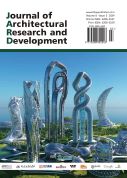Abstract
Dongtan is set to be developed as a sustainable urban-rural integration, aiming to attract a wide range of commercial and leisure investments. The Shanghai Industrial Investment Corporation (SIIC), the largest international investment group owned by the Shanghai municipal government, is leading the Dongtan project in partnership with Arup. The project’s risks are categorized into eight major groups: (1) Force majeure, (2) people-related risks, (3) financial and economic risks, (4) political and country risks, (5) environmental risks, (6) completion-related risks, (7) design-related risks, and (8) technology risks. Among these, political risk is particularly notable for its high probability and significant impact. Effective project risk management is essential to foresee and address uncertainties that could jeopardize the project's objectives and timelines. Appropriate strategies must be implemented to manage and mitigate these risks.
References
Project Management Institute, Al-Shamsi MAL, 1996, Project Management Body of Knowledge (PMBOK).
Miller R, Lessard D, 2001, Understanding and Managing Risks in Large Engineering Projects. International Journal of Project Management 19(8): 437–443
Flanagan R, Norman G, 1993, Risk Management and Construction, Blackwell, Oxford.
Ahmed SM, Azhar S, 2004, International Latin American and Caribbean Conference for Engineering and Technology (LACCEI’2004) 2–4 June 2004: Challenges and Opportunities for Engineering Education, Research and Development.
Klemetti A, 2006, Risk Management in Construction Project Networks, Aalto University.
Al-Bahar JF, 1990, Systematic Risk Management Approach for Construction Projects. Journal of Construction Engineering and Management, 116(3): 49–55.
Yescombe ER, 2013, Principles of Project Finance, Academic Press, Cambridge, 204.
